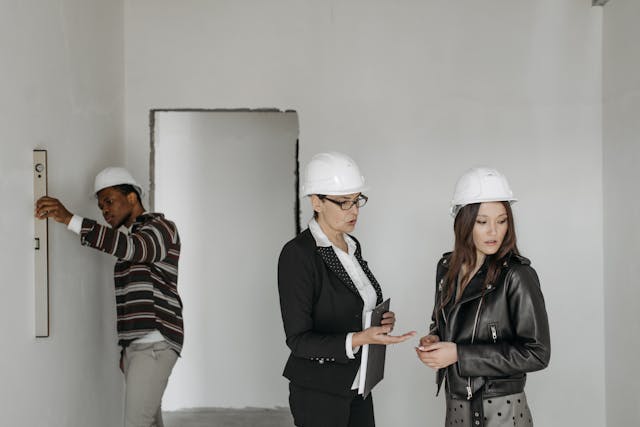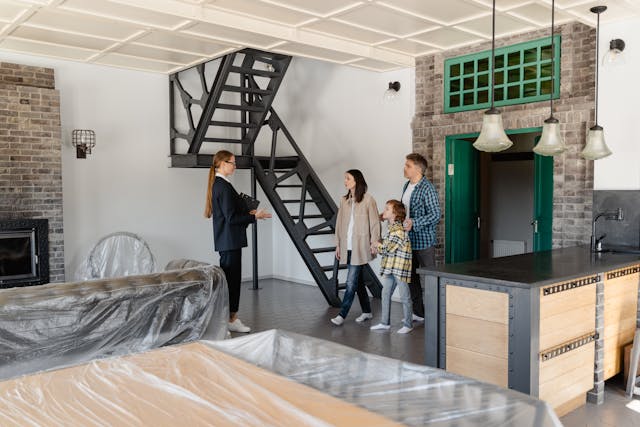Pre Purchase Inspections: Why Home-Buyers Need To Know

Practical Completion Inspection Checklist You Need to Know
March 21, 2025
Home Pest Control: Keep Your Space Clean and Pest-Free
May 1, 2025Purchasing a property is one of the most significant financial decisions you’ll ever make. It’s not just about finding a house that looks good, it’s about making sure that the home is safe, structurally sound, and free of hidden issues. That’s where Pre Purchase Inspections come in. Conducted by licensed professionals, these inspections are a deep dive into the condition of a property and are an essential step before finalizing any real estate transaction. This detailed guide will walk you through everything you need to know about pre purchase building inspections so you can move forward with clarity and confidence. Whether you’re going through a pre-purchase home evaluation or reviewing a building inspection checklist, this article is your complete resource.
What is a Pre Purchase Inspection?
A Pre Purchase Inspection, also known as a building inspection, is a comprehensive assessment of a property’s condition conducted by a qualified inspector before the sale of a home or building is finalized. These inspections are designed to identify structural problems, safety hazards, defects, or future maintenance issues that may not be visible during a general walkthrough.
Unlike a basic visual check, a professional building inspection evaluates both the visible and accessible components of a property. The inspector compiles their findings into a detailed report, which the potential buyer can use to make an informed decision, renegotiate the purchase price, or even back out of the deal if serious issues are found.
Why Pre Purchase Inspections Matter
- Identify potential safety risks and defects
- Prevent costly surprises post-purchase
- Strengthen your negotiating position
- Build confidence in your property investment
- Offer a realistic picture of the home’s condition
What Does a Pre Purchase Building Inspection Cover?
A professional pre-purchase building inspection is methodical and thorough. It typically covers the following areas:

1. Structural Integrity
The structural soundness of a home is paramount. Inspectors assess foundations, subfloors, load-bearing walls, beams, and roof structures. Cracks in walls, uneven floors, or misaligned door frames could point to serious foundational issues.
2. Roofing System
A faulty roof can lead to major problems, including water damage, mold, and insulation issues. Inspections include the roof surface, tiles, flashings, gutters, chimneys, and downpipes. The condition, age, and installation quality of the roofing materials are also evaluated.
3. Plumbing and Drainage
Water systems are checked for leaks, pressure issues, outdated materials (e.g., galvanised pipes), and drainage performance. Inspectors look at taps, toilets, sinks, and visible piping inside and outside the home. This aspect of the construction quality check is vital to ensure functionality and hygiene.
4. Electrical Systems
Faulty wiring or outdated electrical systems can be dangerous and expensive to fix. The inspection reviews the switchboard, circuit breakers, power outlets, and lighting. If needed, a recommendation for a licensed electrician may be included.
5. Pest and Timber Inspection
Often carried out in conjunction with building inspections, a building and pest inspection checks for termite activity, borers, wood rot, and fungal decay. In areas prone to pests, this can be a deal-breaker if not addressed.
6. Internal Components
From doors and windows to flooring and ceilings, the inspector will assess the general condition of all interior components. This includes signs of movement, moisture damage, sagging ceilings, and poor finishes.
7. External Structures and Site Conditions
Retaining walls, garages, driveways, fences, garden sheds, and surface drainage are examined for damage or poor construction. These external factors play a big role in property safety and long-term maintenance.
Additional Inspection Inclusions
While the core areas are consistent, some inspectors offer value-added services or specialized reports, such as:
- Asbestos detection
- Mould analysis
- Thermal imaging
- Moisture meter testing
- Detailed photographic evidence
Ask your inspector what’s included in their standard report and what might require an additional fee.
Common Problems Found During Pre Purchase Inspections
You might be surprised at what professional inspectors find even in homes that look pristine. Common issues include:

- Cracks in brickwork or walls
- Rising damp or water ingress
- Rusting or damaged roofing materials
- Termite damage to timber structures
- Poor drainage or surface runoff
- Asbestos materials in older homes
- Substandard DIY renovations
These problems can be clearly documented in a property inspection report, giving you the leverage and insight to act wisely.
Choosing the Right Building Inspector
The accuracy and usefulness of a pre purchase inspection report heavily depend on the qualifications and experience of the inspector. Here’s what to look for:
- Fully licensed and insured
- Years of local experience
- Membership in professional associations (like HIA or Master Builders)
- Detailed sample reports with photos
- Transparent pricing and availability
- Positive client reviews or word-of-mouth recommendations
Always ask for credentials and references. A seasoned inspector will not only find more but explain things in layman’s terms so you understand what matters.
When Should You Schedule Your Inspection?
The best time to book a Pre Purchase Inspection is after your offer has been accepted but before the final contract is signed. This window allows you to:
- Negotiate the price based on the inspection findings
- Request repairs or concessions from the seller
- Exit the deal without financial penalty if serious defects are found
In highly competitive markets, consider making your offer “subject to building inspection” to protect yourself. A home inspection before buying is one of the smartest decisions a buyer can make.
Cost of Pre Purchase Inspections
While prices vary based on location, property size, and inspector experience, most pre purchase inspections in Australia fall within the $300 to $700 range. If bundled with a timber pest inspection or other add-ons, it may go higher.
This investment can save you thousands by preventing costly repair surprises. Think of it as a small premium for peace of mind.
Understanding and Using the Inspection Report
A good inspection report will include:
- A summary of major and minor defects
- Descriptions of safety hazards
- Photographic evidence
- Recommendations for further investigation or repairs
What to do with it:
- Share it with your real estate agent or solicitor
- Get quotes for repairs and calculate ROI
- Use it to negotiate the sale price or conditions
- Walk away if the risks outweigh the value
Remember: No home is perfect. The report’s purpose is to inform, not to scare you away, but some issues are definitely red flags.
Final Thoughts: Why Every Buyer Needs a Pre Purchase Inspection
In real estate, what you don’t see can hurt you. Pre Purchase Inspections are a buyer’s best defense against hidden defects, unexpected costs, and long-term regret. Whether you’re purchasing a newly built property or a charming older home, an independent building inspection gives you the clarity and confidence to make the right call.
It’s not just a checkbox on your to-do list, it’s a strategic move that ensures your dream home doesn’t turn into a nightmare.
Call to Action
Are you preparing to buy a property? Don’t sign anything until you’ve had a professional Pre Purchase Inspection. Our certified and experienced building inspectors offer thorough, unbiased evaluations tailored to your needs.
📞 Contact us today for a fast quote or to schedule an inspection.
Let us help you buy with confidence.




